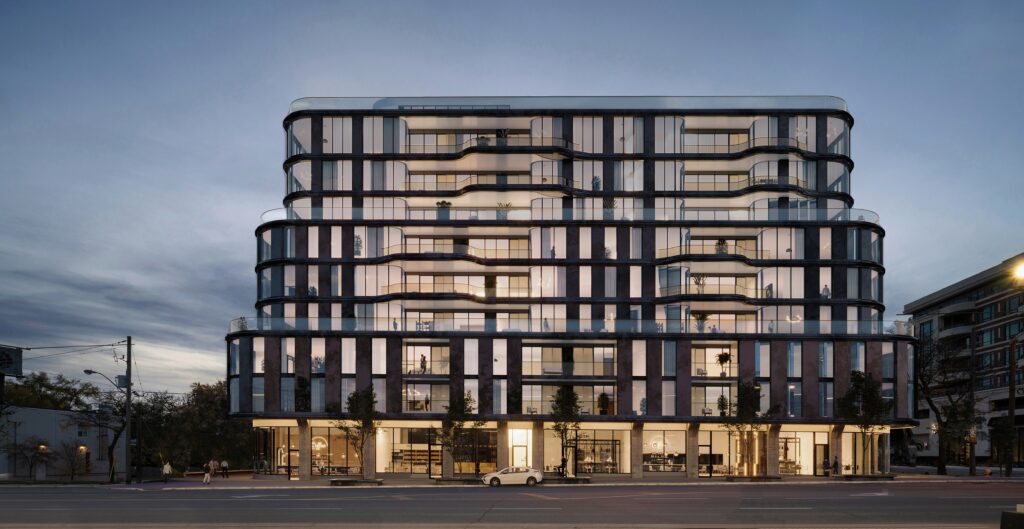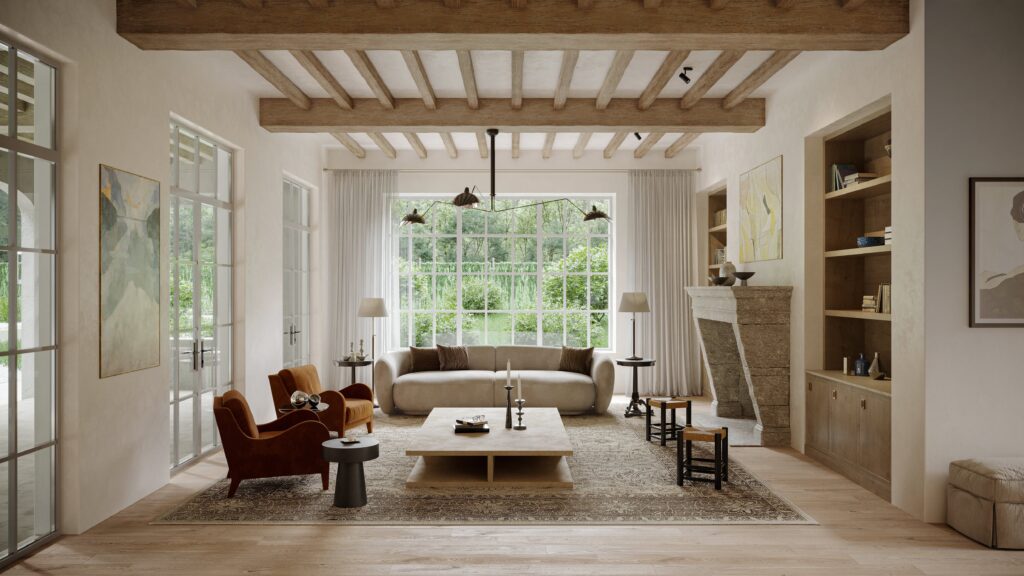Looking to improve your real estate presentation with 3D visualization? Whether you’re developing residential towers, commercial spaces, or mixed-use communities, choosing the right type of 3D visualization is essential. Here’s a top of the best 3D visualization formats used in the real estate industry today.

Why use 3D visualization for property presentation
House tours are great. But what if the property hasn’t been built yet, and your potential buyers are scattered across the globe? The answer is simple: create a solid presentation. And make it even better with 3D visualization. Here’s why it works so well.
It lets people see the property before they step inside
3D visuals give a full picture of what the space looks like before it is even built. You can walk through the future apartment, check out the view from the window, or see how much space is left for the second fridge in the kitchen. It works great for remote clients or international buyers, and especially well for off-plan sales. A few good visuals can replace dozens of showings, and in many cases, close the deal faster.
It answers questions before they come up
One clear, interactive presentation tells about the property more than a hundred PDFs or hours of calls. Clients can explore floor plans and compare design options without needing to ask. And if something isn’t clear the first time, they can come back to it later. It’s less pressure for them, and fewer lost leads for you.
It creates an emotional connection
One common rule we don’t get tired of repeating: you sell people lives, memories, emotions, not just square meters. High-quality 3D render makes people imagine themselves in the space. They start thinking: this could be my home, my office, my view in the morning. Add a bit of soft light, some cozy furniture, and show the client how great it would be to spend memorable moments in the place. And that’s often what turns interest into action.
What types of 3D visualization work best for real estate?
If you’re working in real estate, chances are you’ve already seen 3D visuals in action. They’re everywhere, and for good reason. Some work better than others, depending on what you want to show. And, what is most important, you can combine them to show the property in the most interesting way possible. Let’s take a look at what you can use.
Static Rendering/Still images
Still images don’t move, but they keep the main information about the property. Photorealistic shots show architecture, details, lighting, and the general atmosphere of your project. These renderings are static, meaning they contain animation. Due to this, they load faster. And you can use them even on billboards or brochures.
Exterior renderings illustrate what the outside of the building will look like. They help highlight architecture, materials, and how the building fits into its surrounding environment. This type of rendering is essential when you want to show how a project integrates into its context, whether that’s a city street or a quiet suburb.
As for interiors – that’s where the emotional part kicks in. Interior renderings focus on the inside of the property. They allow you to show furniture arrangements, design choices, lighting, and room layouts. A good interior rendering helps buyers or investors picture themselves in the space, and even think of the stuff they would place on the shelves.

360 tours
360 tours let clients “walk through” the space, they can explore the layout, zoom in on details, and get a sense of scale. This kind of interactive experience helps potential buyers not only learn more about the project but also feel it, and picture themselves living there.
Animation
Animations are a real playground for the imagination. You can pick the most striking angles and showcase them to your client, or go a step further and create a mood-driven video. For example, place a person on the balcony holding a cup of coffee, and suddenly, the viewer starts forming associations. Before you know it, they’re picturing themselves in that exact moment, living in the space.
Digital twins
Digital twinning is a solid trend in real estate. It is an interactive digital copy of a real building. One you can explore, walk through, and even take pictures of – everything you can do in real life, but just on your phone or computer. Real estate developers and (even e-commerce businesses) use digital twins in client presentations to create engaging, interactive experiences. These virtual replicas often include real-time data overlays, such as lighting conditions and floor plan variations, helping customers better understand what they’re buying.
VR/AR
If 360 tours offer an interactive experience, then VR and AR take that to a whole new level – it’s immersion multiplied by 100. These technologies let potential buyers step inside the property they’re considering, without booking a single flight.
VR allows users to fully immerse themselves in a virtual environment using a headset, as if they’re walking through the space.
AR, on the other hand, overlays 3D models onto the real world via a smartphone or tablet screen, helping clients visualize how a project fits into their surroundings in real time.
What else, except basic 3D visualization, can improve your presentation
There is some basic advice that you can follow even if you don’t have enough resources to create 3D visuals (but, believe us), with 3D, they will work much better.
Show amenities
Let the client explore what on-site facilities your future residence has to offer. Children’s playgrounds, kindergartens, gyms, offices, stores, or bars – a small city inside of one residential quarter can become a competitive property sales advantage, if presented properly.
Highlight the neighborhood
Where is the nearest coffee spot? How long does it take to get to school? The surroundings are the key point to consider when deciding between multiple similar development options. Create the neighborhood map with subway stations, medical centers, banks, and malls – all these matter to ensure that the client gets all the information he needs.
Show the property in different conditions
How does the cozy country house look in winter, when snow covers its roof? And what side of the skyscraper is better to catch sunsets? Remember that you don’t only sell walls, you also sell the vibe, so be sure that the customer feels it.
Demonstrate different finishes
Do you have several variants of an interior design? Show them all! Let the client choose the one that matches their aesthetic.
Let’s sum it all up
How useful are interactive 3D tours in real estate?
Let us explain it with the numbers: +40% more conversions from online visits to scheduled meetings. 2X faster closing time in showrooms.
How can I create an interactive 3D presentation?
You can use a customizable tool that allows you to combine different types of 3D visuals to create the best property presentation. L-Touch, for example, has a lot of useful features: integrated CRM, amenities lists, neighborhood map, and many others.
What information is needed to start the rendering?
You need architectural plans, material specifications, environmental context, and perspective views. The better the reference images, the faster and more accurate the 3D model will be. When provided with detailed inputs, model accuracy can reach up to 99%.